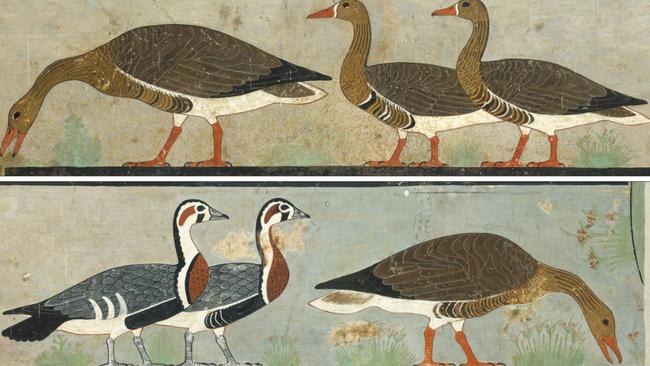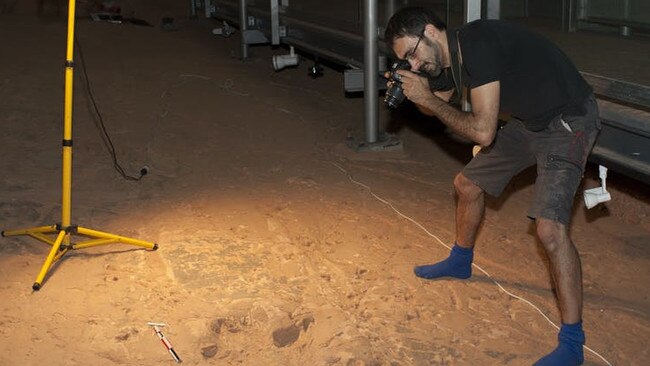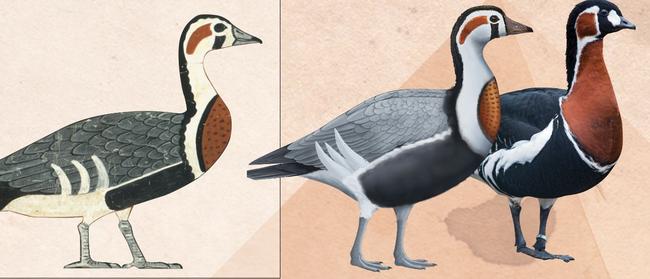Former Lismore man and UQ researcher makes incredible discovery in ancient Egyptian painting
A few years ago he challenged a popular dinosaur story. Now he’s taken aim at one of ancient Egypt’s most famous artworks.

Lismore
Don't miss out on the headlines from Lismore. Followed categories will be added to My News.
He's already debunked a popular dinosaur story, now a former Lismore man has taken aim at one of ancient Egypt's most famous paintings.
It seems Dr Anthony Romilio likes to rock the academic boat.
In 2011, he challenged a popular theory that a dinosaur stampede took place in outback Queensland more than 95 million years ago.
According to the story, a herd of small two-legged dinosaurs were drinking at a lake when a huge meat-eating dinosaur stalked them and charged.
The stampeding herd of smaller dinosaurs left a mass of footprints as they escaped.
It inspired a scene in the Jurassic Park film, and the fossilised footprints bring thousands of tourists to Lark Quarry, west of Longreach, every year.
But Dr Romilio ‒ an independent researcher who specialises in dinosaurs at the University of Queensland ‒ did some more work and found it didn't quite add up.
"I came along and said, 'hey, no, it was actually a plant-eating dinosaur'," he said.
"And it wasn't a stampede; some of the footprints were made at different times.
"I don't think I was very well liked in Queensland after that."

He hasn't let that stop him.
In fact, Dr Romilio has now taken a close look at one of ancient Egypt's most famous artworks, Meidum Geese.
The 4600-year-old artwork has been described as "Egypt's Mona Lisa" and depicts a "strange but beautiful bird".
Dr Romilio said it was quite unlike modern red-breasted geese, with distinct, bold colours and patterns on its body, face, breast, wings and legs.
"My interest, as a scientist, was that the geese did not quite appear to have any similar markings to any modern animal," he said.
"Artistic licence could account for that, but artworks from this site have extremely realistic depictions of other birds and mammals."
Dr Romilio applied a biodiversity indicator, the Tobias criteria, which was the first time it had been used on an ancient animal.
He discovered the painting depicted an unknown species.

No bones from modern red-breasted geese have been found on any Egyptian archaeological site, but the bones of a similar bird were found on Crete.
"From a zoological perspective, the Egyptian artwork is the only documentation of this distinctively patterned goose, which appears now to be globally extinct," Dr Romilio said.
"It (my research) was quite daunting it was my first step into archaeology, and the study was ornithologically based, but also because I was looking into something (the painting) that is very precious.
"I sat on this project for quite a number of years, primarily to find the right method to validate my point of view."
Dr Romilio, who grew up in Dunoon and still has family on the Northern Rivers, said he believed the study was important in understanding ancient biodiversity.
"Art provides cultural insight, but also a valuable, graphical record of animals unknown today," he said.
"These ancient animal representations help us recognise the biodiversity thousands of years ago that coexisted with humans."
The research has been published in the Journal of Archaeological Science.


